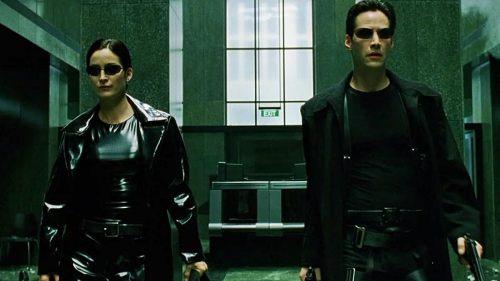Pokemon Go: Better Than VR
For the last few months we have been inundated with reports about the Next Big Thing: virtual reality. It’s a bit of a repeat for people older than 30, who have already lived through one aborted VR craze (how ya doin’, Lawnmower Man?), but this time it feels more real. The tech is more robust, the applications more diverse. It seems like VR could actually work. Except…
Except there’s something about strapping on a big helmet and earphones that isn’t appealing. Even as the tech gets better, as the wearables get more wearable, the idea of blocking out the entire world appeals to a vision of a couch potato from 20 years ago. Today we’re more hyper aware, there’s more going on, and we have a hard time focusing on anything at all. I just don’t see modern people putting the headsets on and sitting on their couches all night.
Enter Pokemon Go. It’s the latest iteration of the decades-old game, and the premise is the same as previous versions, more or less - collect Pocket Monsters and train them up to do battle with other people’s Pokemon. But this version has a new wrinkle: it’s set in the real world. You use your phone and walk around your real world neighborhood finding the Pokemon where they hide, interacting with “Pokestops” and visiting gyms to do battle. And you have to actually go to these places - you can’t make your little digital dude walk there by pressing a button. You have to get off your ass and go.
This isn’t going to be a piece about the exercise benefits of Pokemon Go. Lots of people have written that, and we’ll see how it really shakes out. No, what interests me about Pokemon Go is the fact that this is using a technology better than VR, more immersive, more transformative: augmented reality.
AR allows you to interact with reality as it exists - you are standing in your bedroom, looking at the stuff that you have in your bedroom - but adding an extra layer. In the case of the game it’s throwing a Pokemon in there (you experience AR through your phone’s camera) and that little fucker is just standing on your bed. It’s crude, but it’s also amazing. Most of all it WORKS - your brain really reacts like there’s a Pokemon there (sometimes I unconsciously glance up from my phone to get a better look at the beast and realize it isn’t actually there).
Transmogrifying reality is exciting. Much of the best fantasy, I believe, posits a fantastical world just one step away from our own; if we simply knew where to look we would find a whole civilization of faeries or monsters or wizards. AR operates spiritually on a level not unlike the Hindu concept of Maya, the veil of illusion that keeps us separated from true reality. From The Matrix to Harry Potter this is the basis of our greatest fantasies, that we could pierce that veil and get a look at the truth beneath it. AR gives you the feeling that you’re doing just that.
Pokemon Go is a very rudimentary version of AR. Eventually AR might be accessible not through your phone but through glasses, or contacts, making the layering of fiction upon reality more seamless. Still, it does the things AR is meant to do - it recontextualizes the real world. A Pokemon Go player finds a local church reimagined as a Pokestop, or a local bar into a gym. The way the player interacts with these spaces is changed, and they take on a whole new meaning. The humdrum, everyday things you see in your neighborhood are transformed into something new, a magical gateway to the game.
In this way Pokemon Go works like public art or flash mobs or any event or thing that disrupts the banal march of daily life. The disruption that you experience in these moments make you see everything with new eyes, allows you to experience the ordinary in extraordinary ways. I think often about Man on Wire, the doc about Philippe Petit’s wirewalk between the Twin Towers. I think about the people on the street, going about their drudging commute, looking up at this figure perched in the air. The Twin Towers were, if we’re being honest, ugly as hell, two lumpen monoliths that blotted out the sun in downtown, but Petit’s stunt made them different, if only for the moment. I think a lot about the looks on the faces of those people watching him walk, and how public art can truly make a difference in a life.
It isn’t that Pokemon Go is public art but rather that Pokemon Go can elicit the same reaction from players. All of a sudden the world is changed around them, and it holds cute little creatures and exciting little opportunities. Pokemon Go is just the first step, and in ten years we are going to have AR experiences that utterly transform the way we experience our lives. The possibilities are huge on a practical level - imagine a version of Google Maps that seamlessly highlights the path in front of you, or an overlay that lets you look at an item of food and get instant nutritional information - but they're even more incredible on a personal, artistic level. Imagine standing at the site of the Twin Towers and looking up to see them resurrected, looming above you, and dancing between them the figure of Philippe Petit, a ghost of a moment forty years past, living before your eyes while you occupy the actual space where it occurred. I can’t wait.



